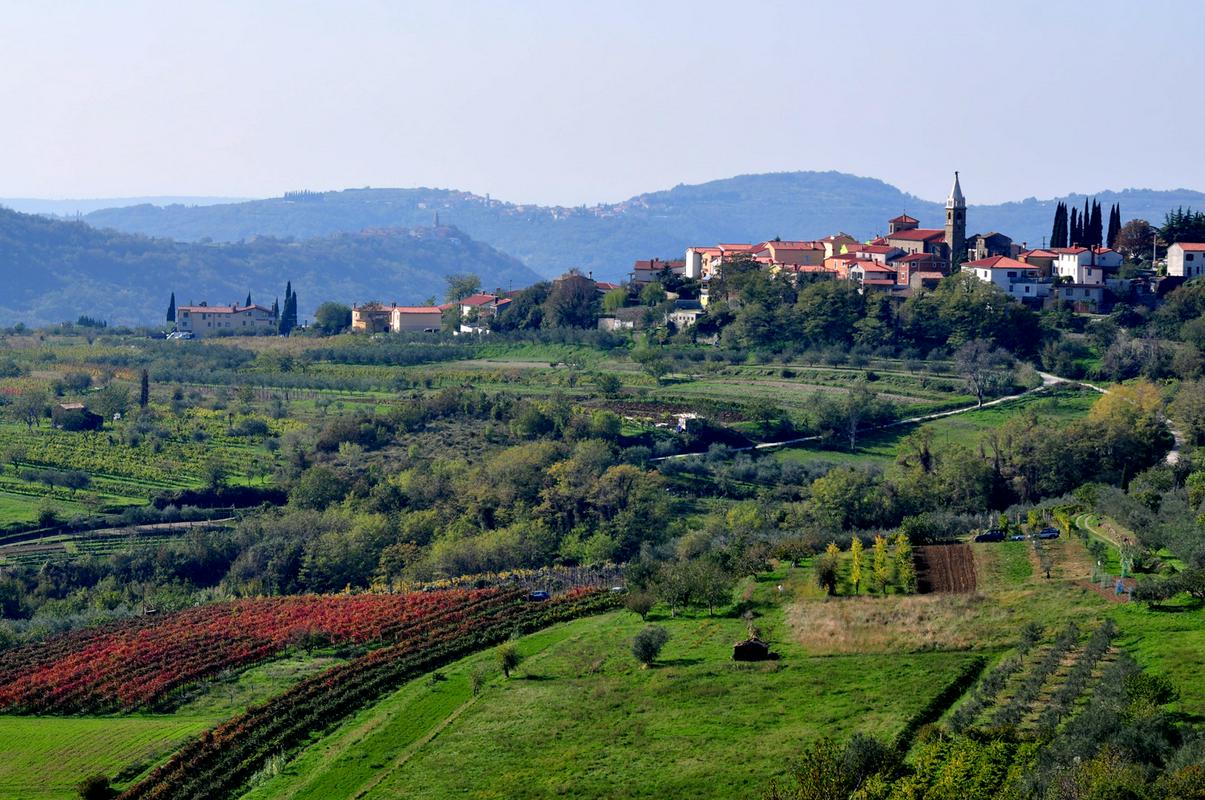
Slovenian Istria is known beyond the country’s borders for its spectacularly beautiful landscape – a countryside characterized by harsh, rocky terrain. The poor soil of the region, however, has often made it difficult for its inhabitants to make a living. For decades, beginning in the 19th century, courageous local women made rounds far from their home villages in search of a better life. They were known as Šavrinke, after the local Šavrin Hills.
Šavrinke traveled throughout Istria and beyond selling fresh produce, eggs, freshly baked bread, and other goods from their farms. Equipped with baskets known as “plenjerji”, which they carried on their heads, Šavrinke were a common sight in the port city of Trieste as well as in Koper and other Istrian towns. They returned from Trieste with coffee, sugar, salt, wool, and other products they could never get back home. Šavrinke were instantly recognizable by their traditional white dresses; some of the poorer women even traveled barefoot.
The life of Šavrinke was a difficult one. Many began to sell goods when they were young teenagers. Some continued to work until they married; for many others, it was a lifelong profession. Despite the hardships, they were never short of customers and were able to support their families even in times of economic crisis and international conflict.
After World War I, Slovenian Istria passed from Austria-Hungary to Italy. The newly installed Fascist regime persecuted ethnic Slovenians, and Šavrinke needed to obtain special permission to carry on with their work, but most continued their tradition despite the difficult political circumstances.
In the aftermath of World War II, Slovenian Istria became a part of Communist Yugoslavia and the area’s villages found themselves cut off from Trieste, which remained in Italy. Even though anyone crossing between East and West was subject to a thorough inspection, some women continued to smuggle eggs across the Cold War border. However, the lifestyles of postwar Europe were changing rapidly, and ever fewer people still made use of the services offered by Šavrinke. With the dawning of the consumer age and the spread of supermarkets, the tradition that had helped many women to make a living ultimately vanished.
Memories lived on, however, and the era of Šavrinke is now recognized as one of the defining elements of local history – a time when ordinary women seeking a better life brought respect to their remote villages and helped their families to survive difficult times.


































































